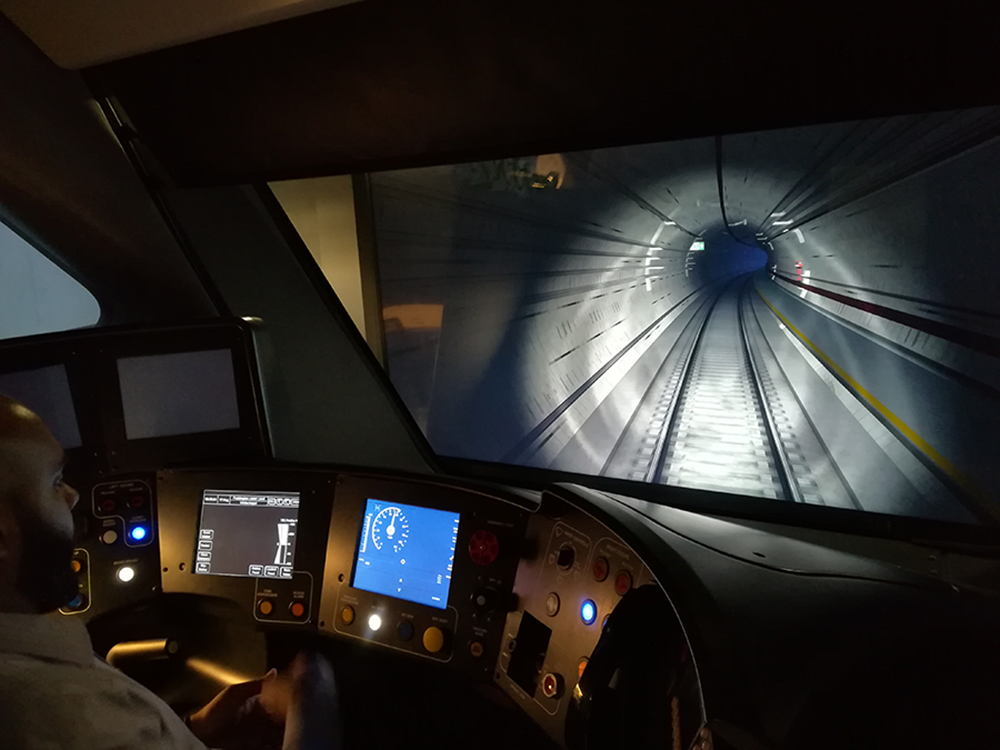Elizabeth Line: Supporting a Smooth Opening
This month, the Elizabeth line opens, improving capacity, accessibility and reducing journey times. How have we helped?
Crossrail has been Europe's largest construction project, connecting Essex in the east and Berkshire in the west to central London, using state-of-the-art public transport. The Elizabeth line is a 60-mile-plus rail line with 40 stations, from Heathrow and Reading, to Abbey Wood and Shenfield. It provides much-needed capacity around central London.
RSSB has been helping the Elizabeth line tackle its unique challenges and connect with the national network on safety and standards.
Ultimately it will be possible to run 24 trains an hour. But how is this done on a brand-new railway, safely and reliably?
The Elizabeth line connects with a national railway system that has become one of the safest in the world. The industry knows this only too well. At RSSB we are at the heart of these challenges. We provide our members with the right data, research, and foresight to focus interventions on the right risks at the right time.
The Crossrail project introduces new, additional, challenges. There is novel signalling, distinct types of operation, a completely new route, and a relatively new fleet of trains. This creates safety-critical tasks not covered by the traditional Rule Book and presents new risks that need to be understood and managed.
The Elizabeth line sees the UK’s first application of a Communication Based Train Control (CBTC) in the central core. CBTC is like the European Train Control System (ETCS) but differs in the way movement authorities are sent to the train from the system. CBTC, along with Automatic Train Operation (ATO), is a form of moving block, and this gives you the additional headways you need to run those 24 trains an hour.
Our operational specialists were brought in early to analyse the requirements. This led to a dedicated Rule Book for Crossrail. Critically, the rules were drawn up in close collaboration with project partners, such as the train operator MTR. The rules also retain consistency in format and style with the main Rule Book, to help users understand how they align, and that they are compatible with one another. In total, 16 Central Operating Section Operating Instructions units (for signallers), 14 Handbooks (for track workers) and 22 Rule Book modules (for drivers, signallers and other operational staff), and a general CBTC information module were developed. Everything was put through a rigorous verification and validation process.
Then there’s the new trains, and the little snags and teething problems that come with them. MTR and Bombardier discovered an error in their risk assessment for the Class 345 fleet, and we helped them resolve it. When the ETCS fails, the driver must rest the train by pressing buttons in a certain sequence. However, a curious anomaly meant that if they were pressed in the wrong order, there was a chance that the train would move without protection. RSSB providing a second pair of eyes looking at the specific risks was important, and ensures the trains meet passengers’ expectations for safety.

We have also been able to help ensure all the players are ready to manage key safety issues. Human factors expertise has been applied to understand the risk of cognitive underload and fatigue in train drivers, particularly when switching between ATO and conventional signalling either side of the core. Staff assault risk has also been considered.
The Elizabeth line is fully embedded in the key safety decision making and monitoring tools that RSSB provides all members. Particular attention is being given to avoiding duplication of reporting in the main Safety Management Intelligence System (SMIS) and TfL’s own system, known as IE2. Key staff are now familiar with these systems. RSSB has worked closely with MTR Elizabeth line, Rail for London Infrastructure, TfL, GWR, and Network Rail to understand and clarify their interfaces and reporting responsibilities.
MTR are of course no strangers to RSSB or the benefits of collaboration. CEO Steve Murphy has been an RSSB Board Member and former chair of the System Safety Risk Group. He continues being a, champion of the Leading Health and Safety on Britain’s Railway strategy. The operator is using good practice such as our work on safer stairs and escalators in public places, and signals passed at danger (SPADs).
Our peer reviews of MTR’s risk model and Covid risk assessments have had knock-on benefits for wider work for our members. While the operator has benefited from independent validation, the learning has been fed into updates to the main Safety Risk Model, benefiting everyone.
All this means the Elizabeth line is ready to open fully and safely, successfully introducing new technology, systems and ways of working. Our experts have provided independent and objective analysis, unlocking opportunities to improve safety, performance and sustainability with solid data, research and standards. It means – ultimately – the Elizabeth line will run 24 trains every hour, just a few minutes apart, connecting London with fresh connectivity and capacity.
If you are interested in finding out more about how RSSB can help you and your organisation become safer, healthier, more efficient and sustainable, please get in touch with us at www.rssb.co.uk and find out about our training, consultancy, membership and affiliation services.

